and the rest is art history…
"and the rest is art history…" is a series of ai generated images taking a tongue in cheek look at famous artists and artworks. By researching the great artists' lives and the development of their most famous works, "befores" and "afters" are imagined; ai text to image prompts are explored and tweaked; and the image resource are then composited into a final image.
This series is constantly growing. The current collection is available in NFT format and can be viewed at https://exchange.art/series/and%20the%20rest%20is%20art%20history…/nfts
"The Discontent of Sarah Dupont"
It was Autumn of 1769 and Sarah Dupont was not at all pleased with her younger brother, Thomas Gainsborough, when he presented her with this painting of her son – his nephew – Gainsborough Dupont. Thomas tried to argue that it was a true and accurate portrayal of the spirited young lad and his chums in the height of their youthful exuberance. Despite his protestations, Sarah was adamant that Thomas completely redo the painting, this time ensuring that the young Gainsborough was cleaned up, spiffed up and raised up to the more befitting standard of a young gentleman… and the rest is art history…
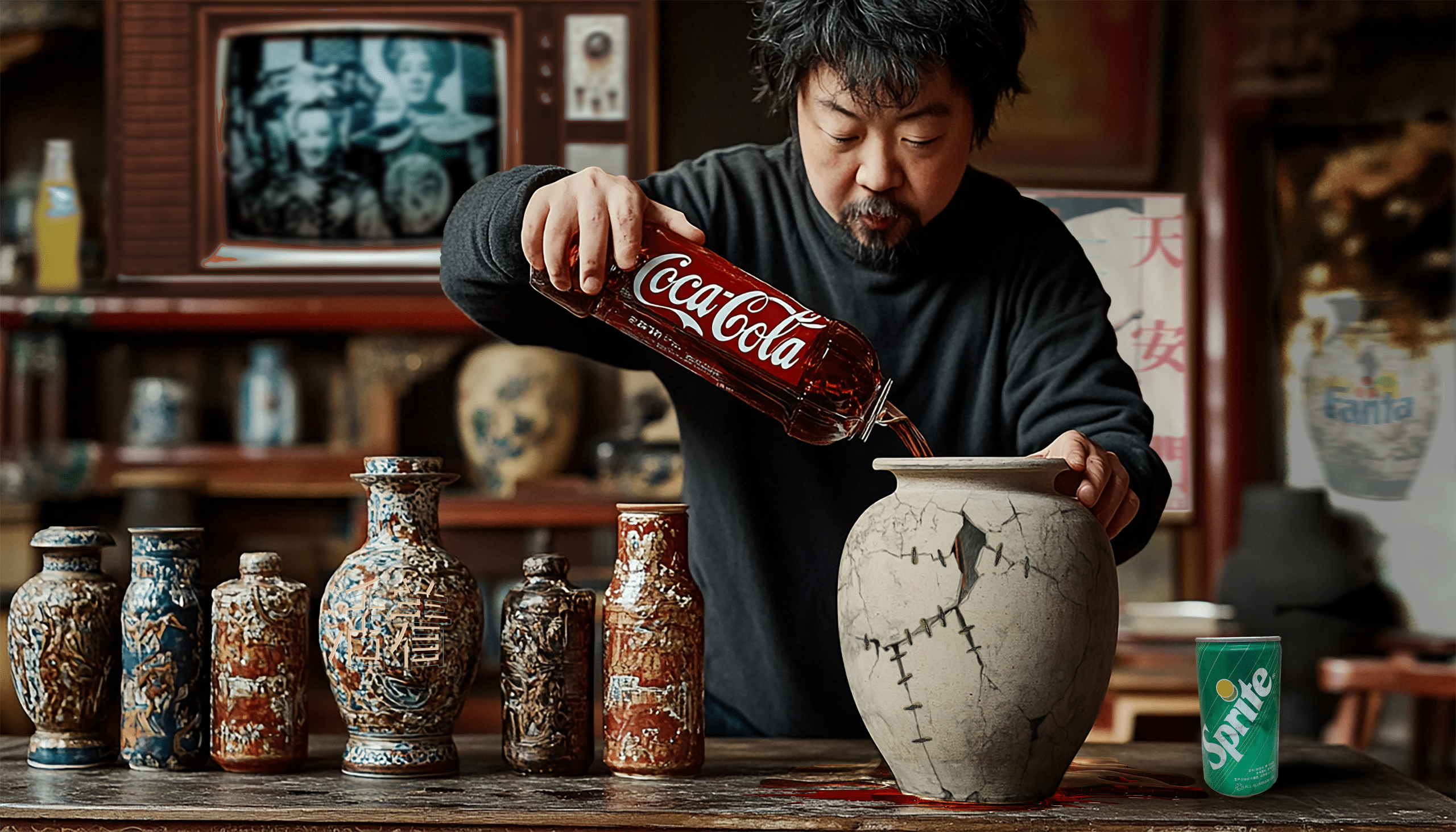
"Explorations into the Status Quo"
Fully titled “Explorations in Challenging the Status Quo”, most scholars agree that this recently discovered photograph, in which we find Ai Weiwei experimenting with various conceptualisations of kicking against traditional expectations, was taken circa the early 1990s. We see here a range of items Ai has been using to question the blindly accepted mores of the time. It is believed that after some of the complexities involved in the directions that his investigations were heading, he realised that the most profound and effective way to express what he wanted to communicate was found in a single transformative and rebellious act of destruction… and the rest is art history…
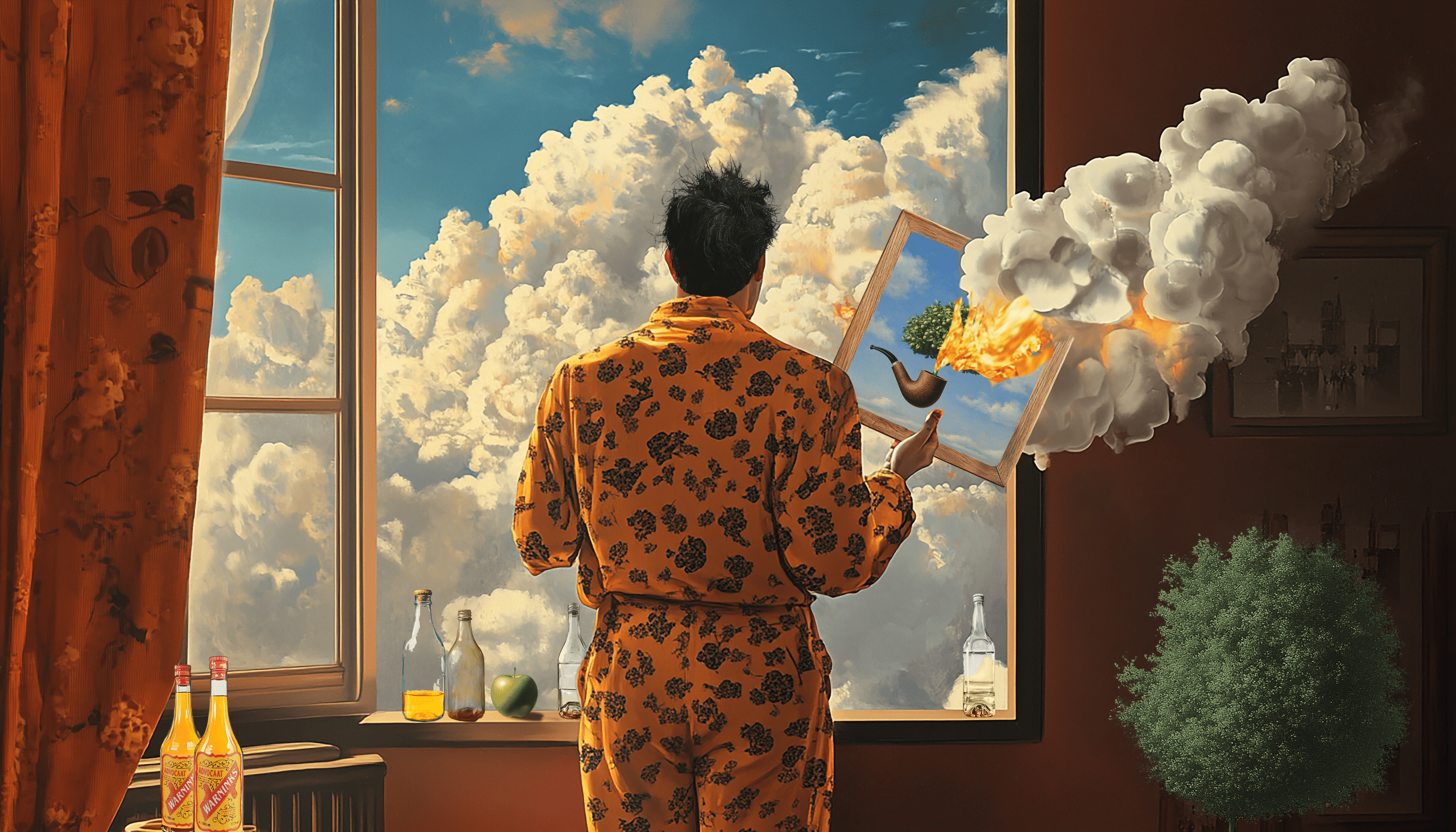
"Rene’s Fiery Epiphany"
Late one morning in 1929. A morning that appeared as irrelevant as any other seemingly trivial morning. A morning that, however, turned out to be one of unparalleled significance to the reframing of the philosophical and existential truths of the perceived relationship of the created work and what it represents (maybe have a chat over a relaxed morning tea with Duchamp and Michael Craig-Martin a bit more about that).
Rene stumbled out of bed worse for wear with a pounding hangover and definitely not on the right side of wakefulness. He reached for his pipe and lit up in the hope of puffing some clarity into his brain cells for the coming day.
Had anyone been there they would attest that a brief split of a second later, Rene cried out, “Merde! Cici n’est pas une pipe!” as the revelation of the treachery of images dawned on him… and the rest is art history…
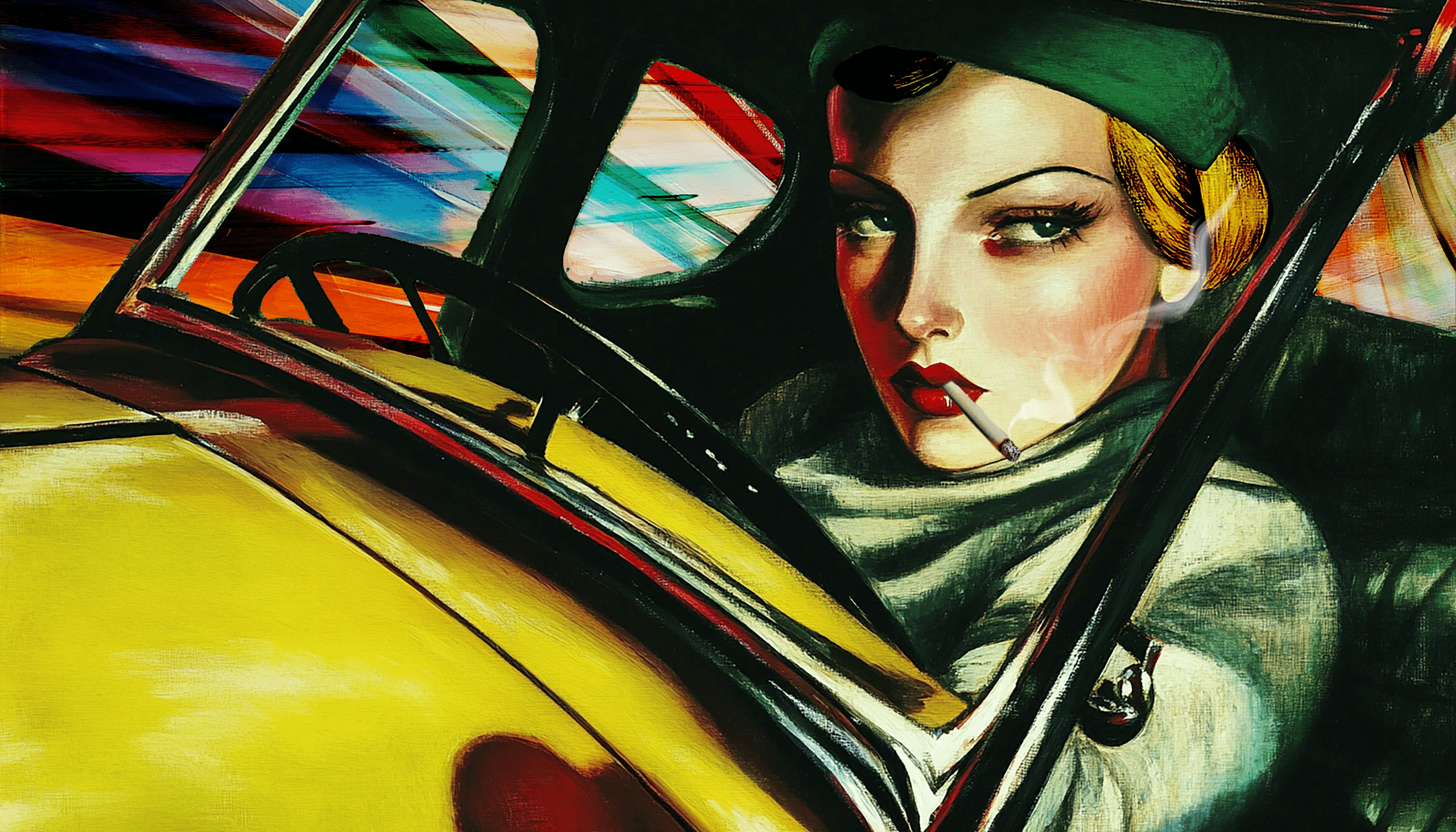
"Tamara’s Little Yellow Renault"
When “Die Dame” magazine commissioned Tamara de Lempicka to create the cover for their upcoming edition celebrating the burgeoning independence of the liberated deco woman, she knew that there was truer personification of the concept than herself. And what better context than the modern woman, nonchalantly driving at speed, indifferent to the judgement of others, with a “fick dich” attitude evident in the autonomous aloofness of her demeanour.
As seen in this work, she originally set herself driving her own little yellow Renault – ever-present cigarette adding a final smouldering and barely covert sexual touch to the scene. "Die Dame" loved what she had done, but they wanted a vehicle representative of a higher status, more worthy of the affluence of their readership. They also thought the cigarette might alienate those of their audience who didn’t “smoke”. Tamara dropped the cigarette and replaced her little yellow Renault with a sporty green Bugatti… and the rest is art history…
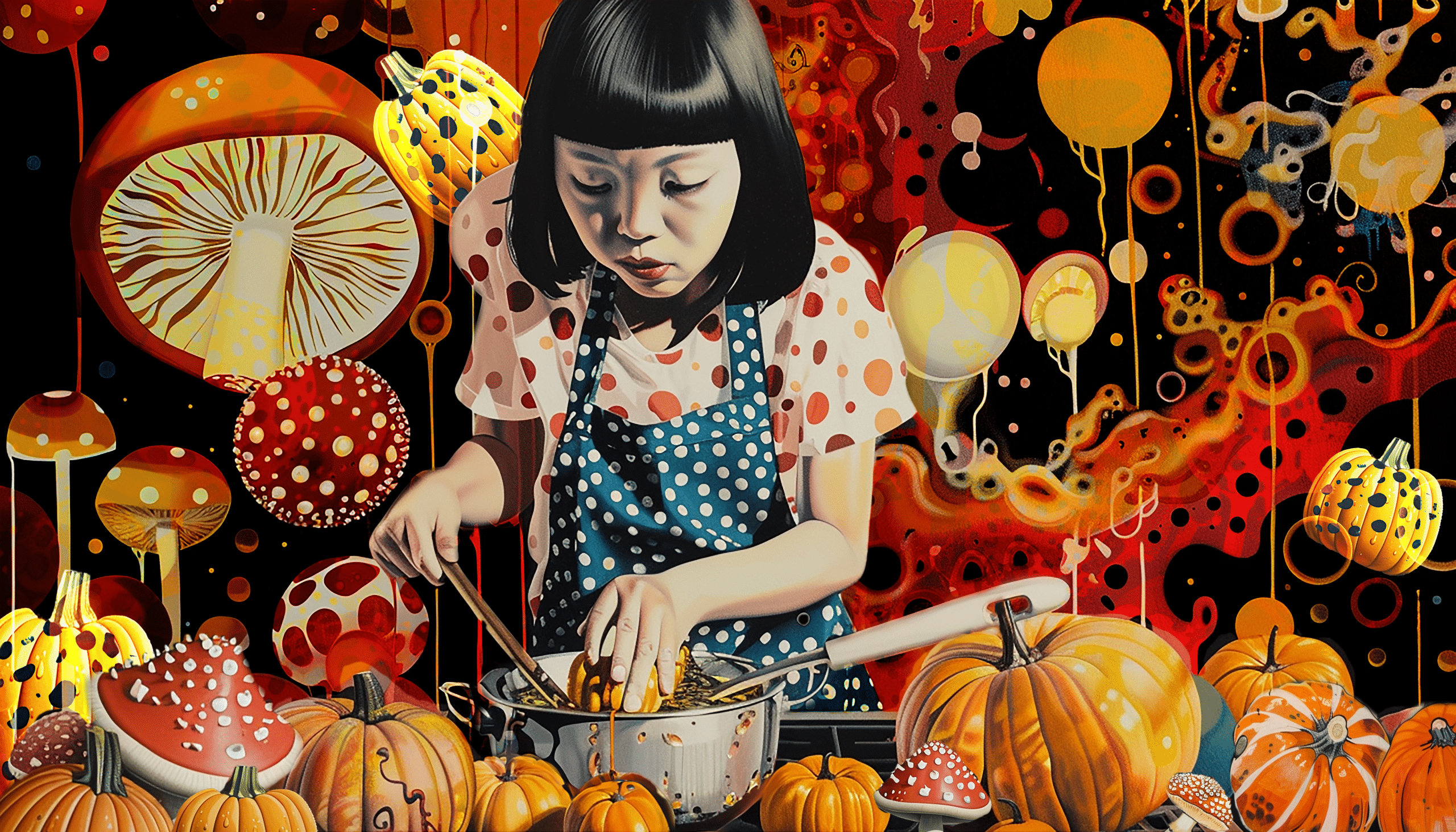
"Yayoi's Mushroom & Pumpkin Soup"
Circa 1939 and a young Yayoi Kusama returns from a trip to the forest area of Matsumoto where she had collected a delicious looking bounty of beautiful, fairy-tale red mushrooms all covered in white polka-dots. She adds the foraged mushrooms to the pumpkin soup she has gently simmering away on the stovetop. Inquisitive, she takes an exploratory sip or two… the universe explodes around her… and the rest is art history…
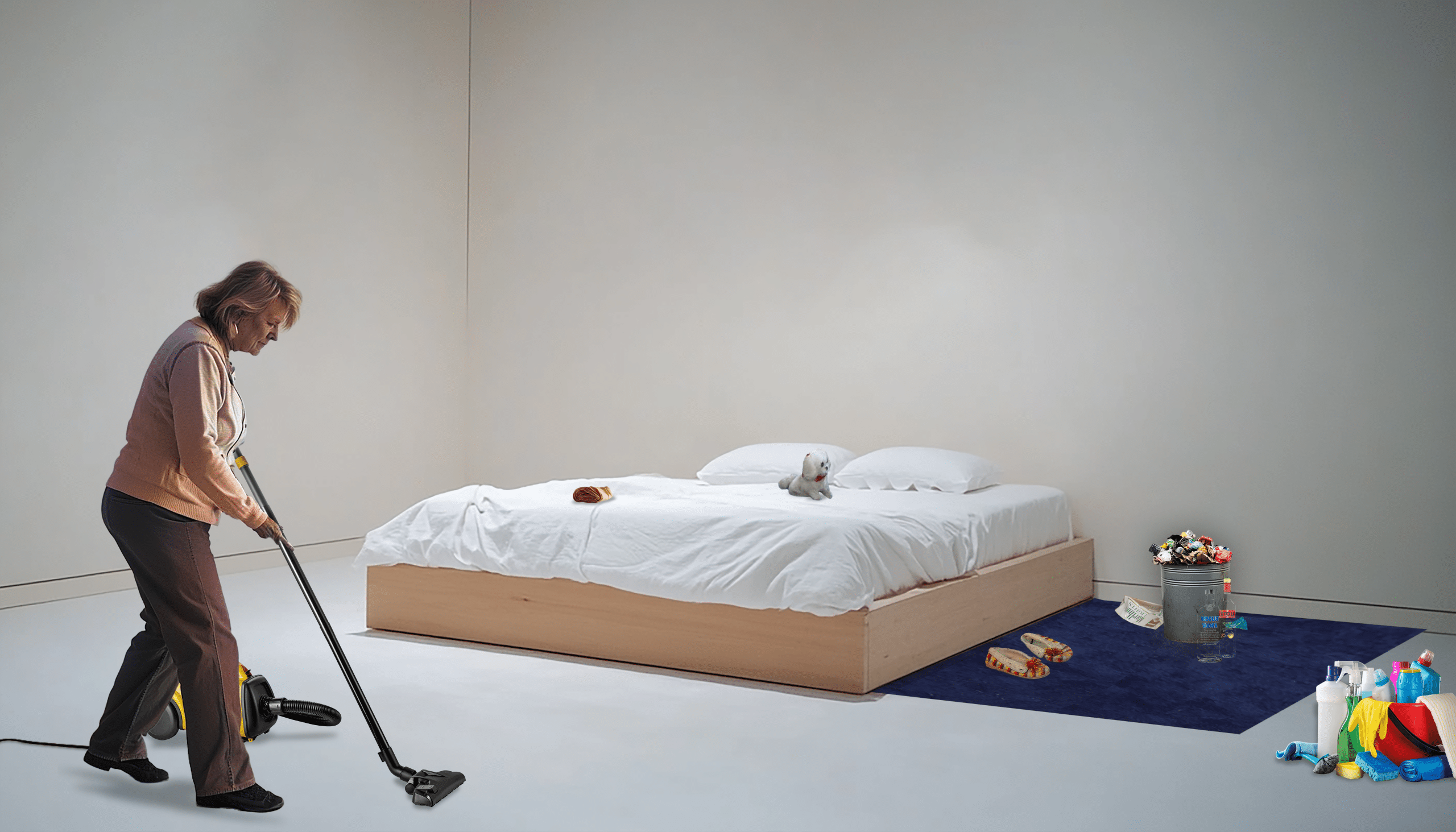
"Pam Cleans up for Tracey, 1998"
During the year before exhibiting “My Bed” at the Tate, Tracey Emin was living her seminal work and exhibiting it around the traps. Whilst taking a break at the local from an almost completed bump in session, Tracey’s mum, Pam Cashin, drops by the space to see how things are going, only to find no one around, and the room in such a state! She takes one look and, just like a mum, she grabs a hoover, some cleaning gear and a bin and gets stuck in. Tracey returns later and after a minor melt down, reverts things to the truth – the diorama of the blatantly honest chaos of her humanity… and the rest is art history…
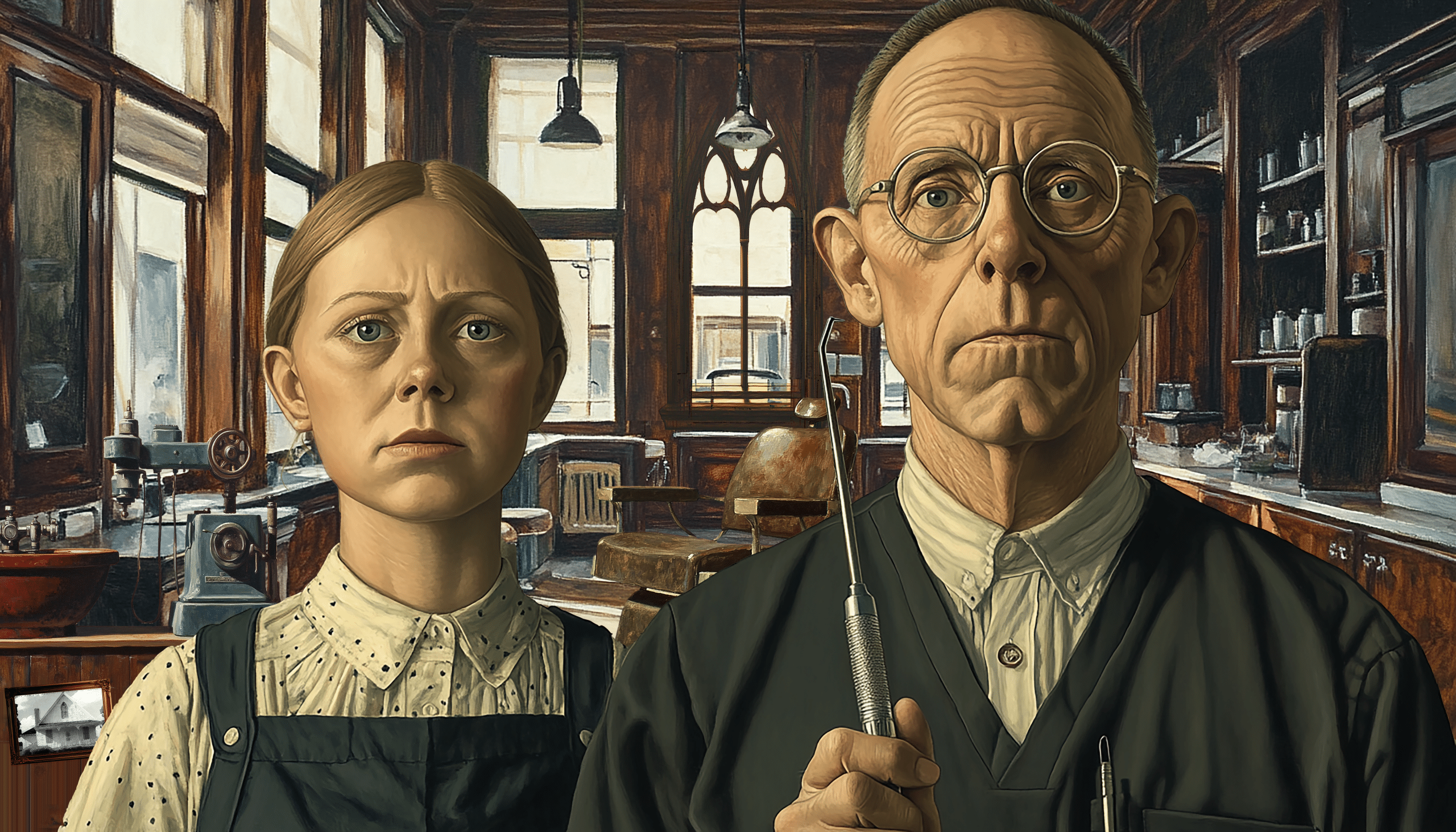
"American Dentist"
As far as visits to the dentist go, the memory of this one to his family dentist, Dr. Byron McKeeby, in early 1930 remained strong. Something about it insisted that recollections of it randomly, yet persistently, kept returning to Grant Wood at the oddest of moments. Throughout the 6 months or so after the appointment the memory kept, without conscious effort or warning, declaring itself in Wood’s painting practice.
In an attempt to intentionally purge himself once and for all, he started to deliberately create works that overtly referenced the memory. This is the first and, unequivocally, the most obvious manifestation of the memory. Many variations and versions followed, often evoking urban and rural scenes collected in his travels and frequently utilising his sister, Nan Wood Graham, and their dentist, Dr. McKeeby as models… and the rest is (art) history…
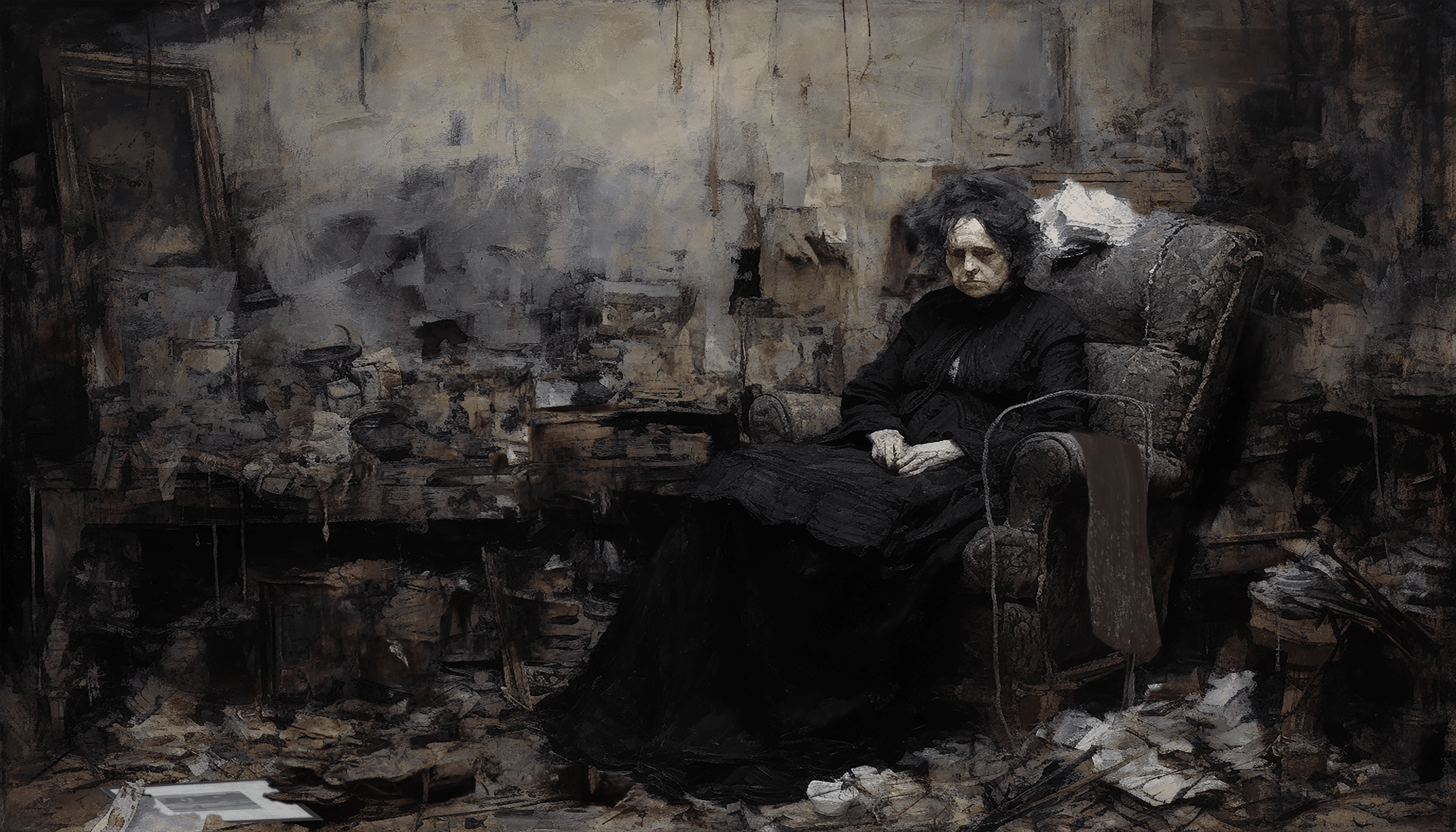
"Whistler's mother the day before"
When James Whistler dropped in on his mother the day before her big portrait sitting, this how he found her.
A mild panic ensued, but after a fair bit of elbow grease, a cropping of the original scene he had in mind and a couple of bits and pieces which were lying around hung strategically in the background… well…
and the rest is art history…
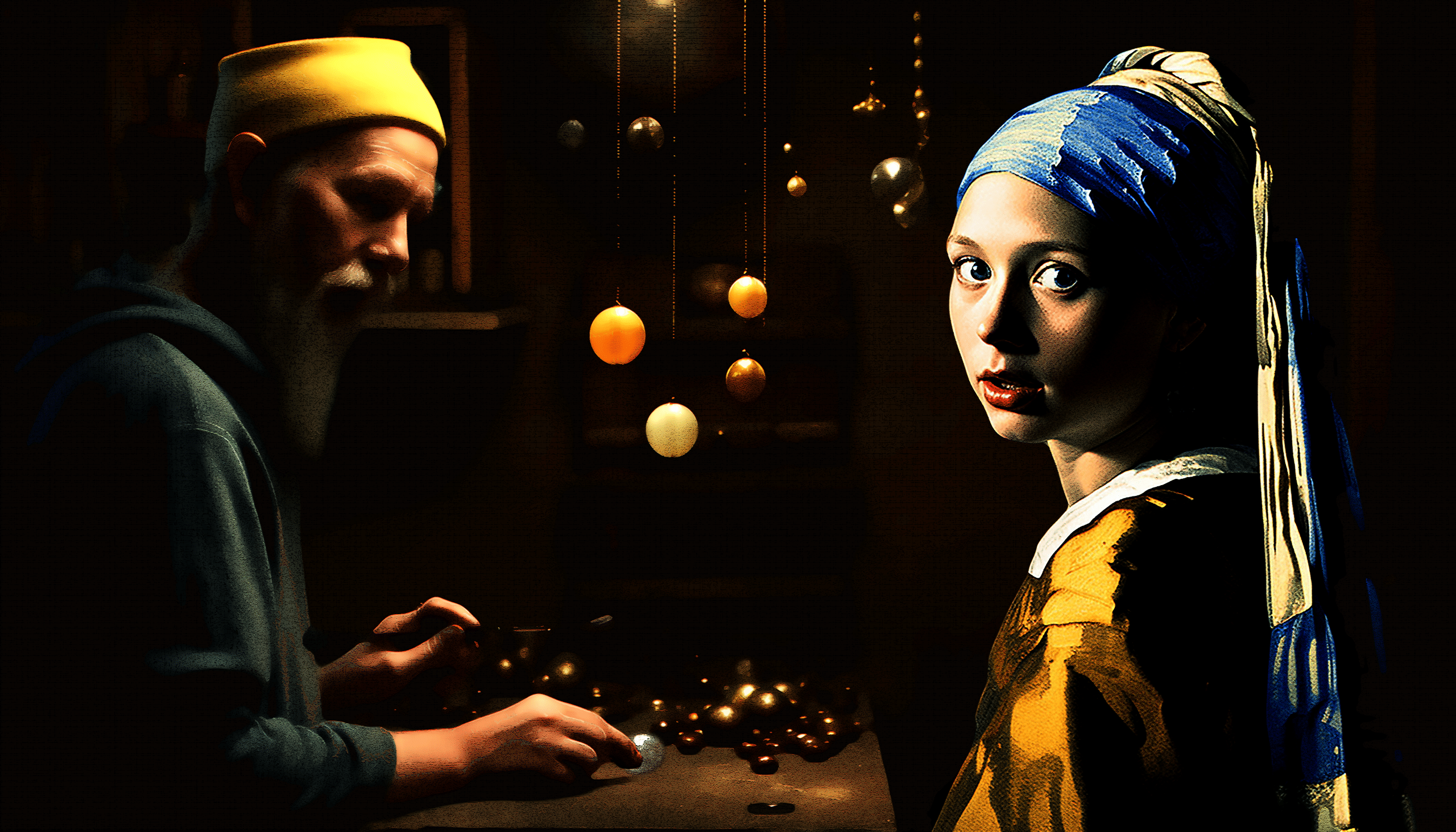
"The Next Day at the Pawn Shop"
Looking a bit startled at being caught out, the girl with a pearl earring had no choice but to head down to the pawn shop the day after her sitting to haggle on a price for the pearl earring – Vermeer had reneged on their agreed upon sitter's fee and was ghosting her like it was 1672… and the rest is art history…
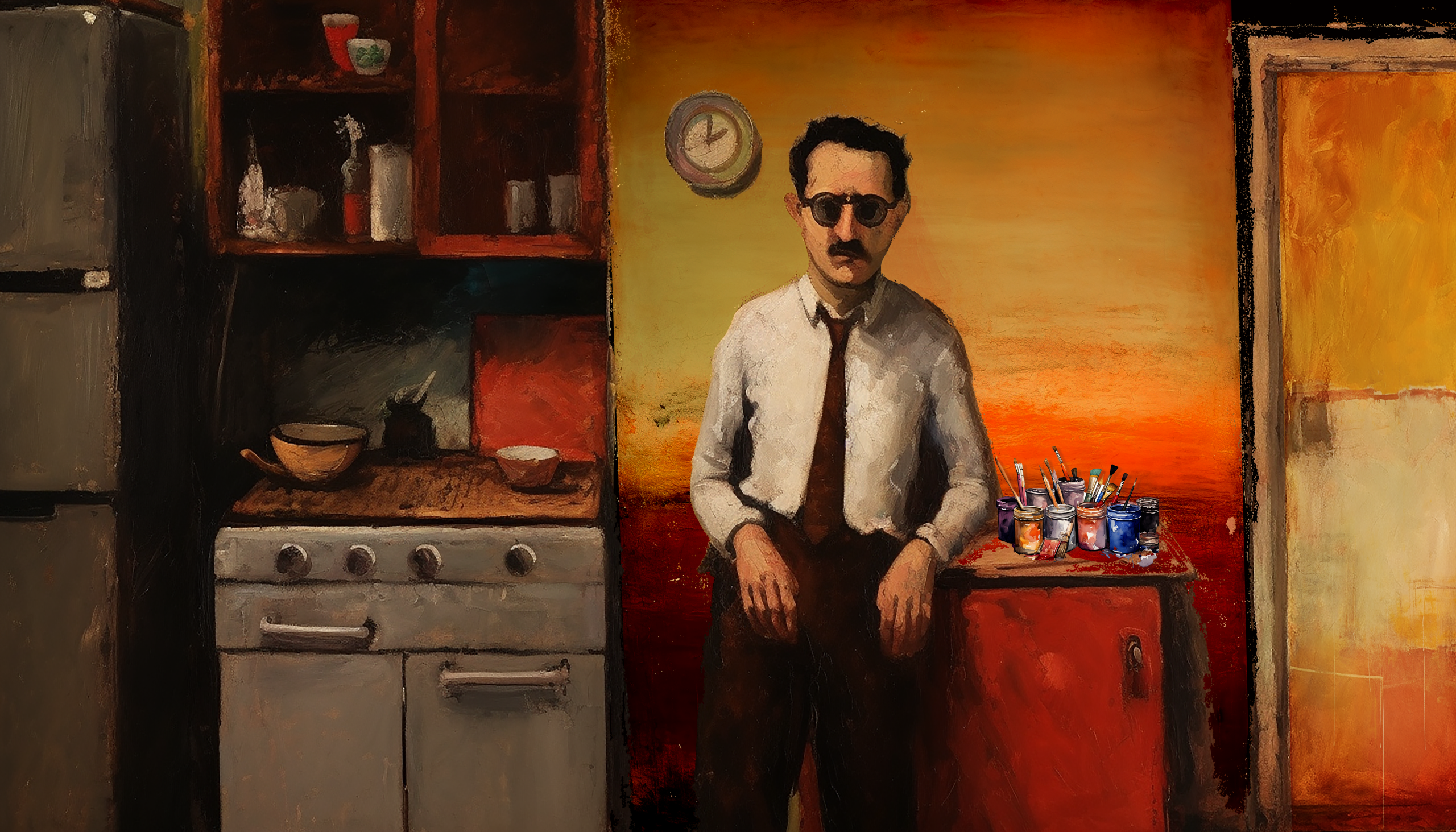
"Rothko Paints the Kitchen, 1947"
Circa 1947, Mark Rothko decides to paint his kitchen. He is not sure what colour to do it in so he uses some old paint samplers to try out some options. After some thought, he and Mell decide that they like it pretty much as is… and the rest is art history…
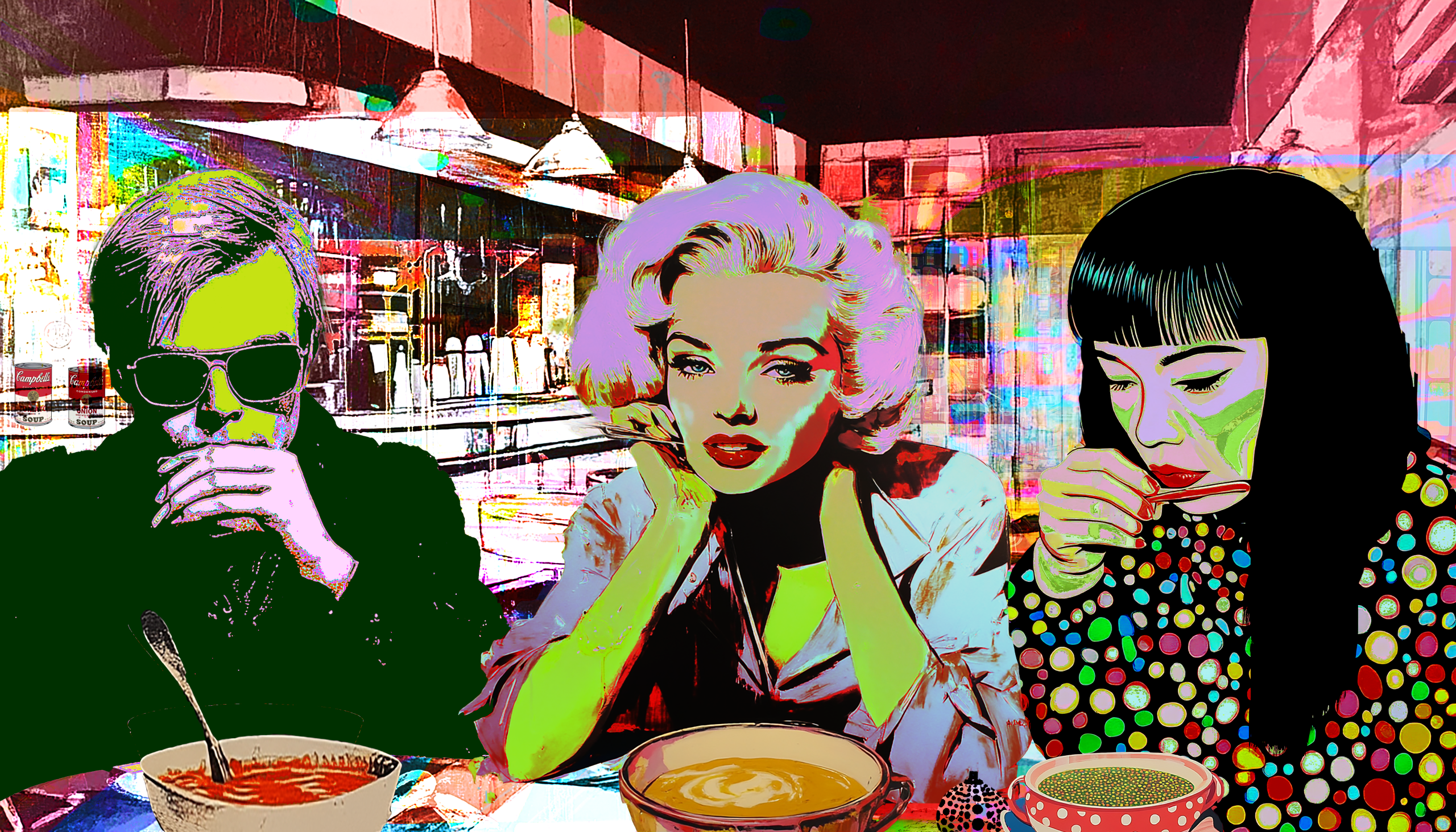
"Andy, Marilyn & Yayoi Have Soup"
It’s early 1962 New York, Downtown Manhattan, and we find Andy, Marilyn and Yayoi getting together in a divey little diner, eating soup. Yayoi shares her recipe for mushroom and pumpkin soup. Andy contemplates the empty soup cans. Marilyn is content to have escaped the paparazzi and enjoys the temporary sense of anonymity… and the rest is art history…
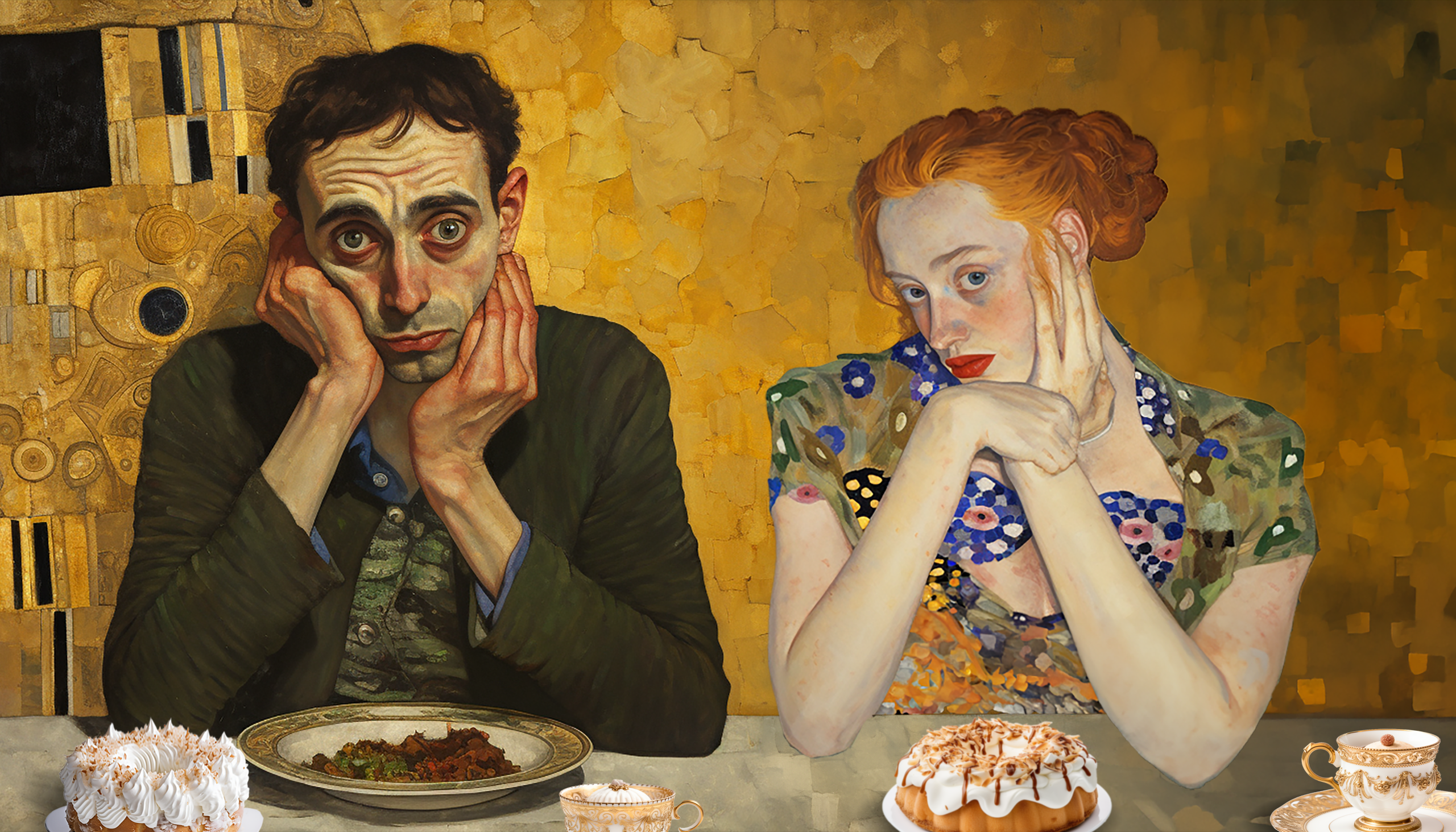
"Gustav and Emilie's First Date"
Gustav and Emilie's first date wasn't quite what Gustav had hoped for. Things did improve, though, and the rest is art history…
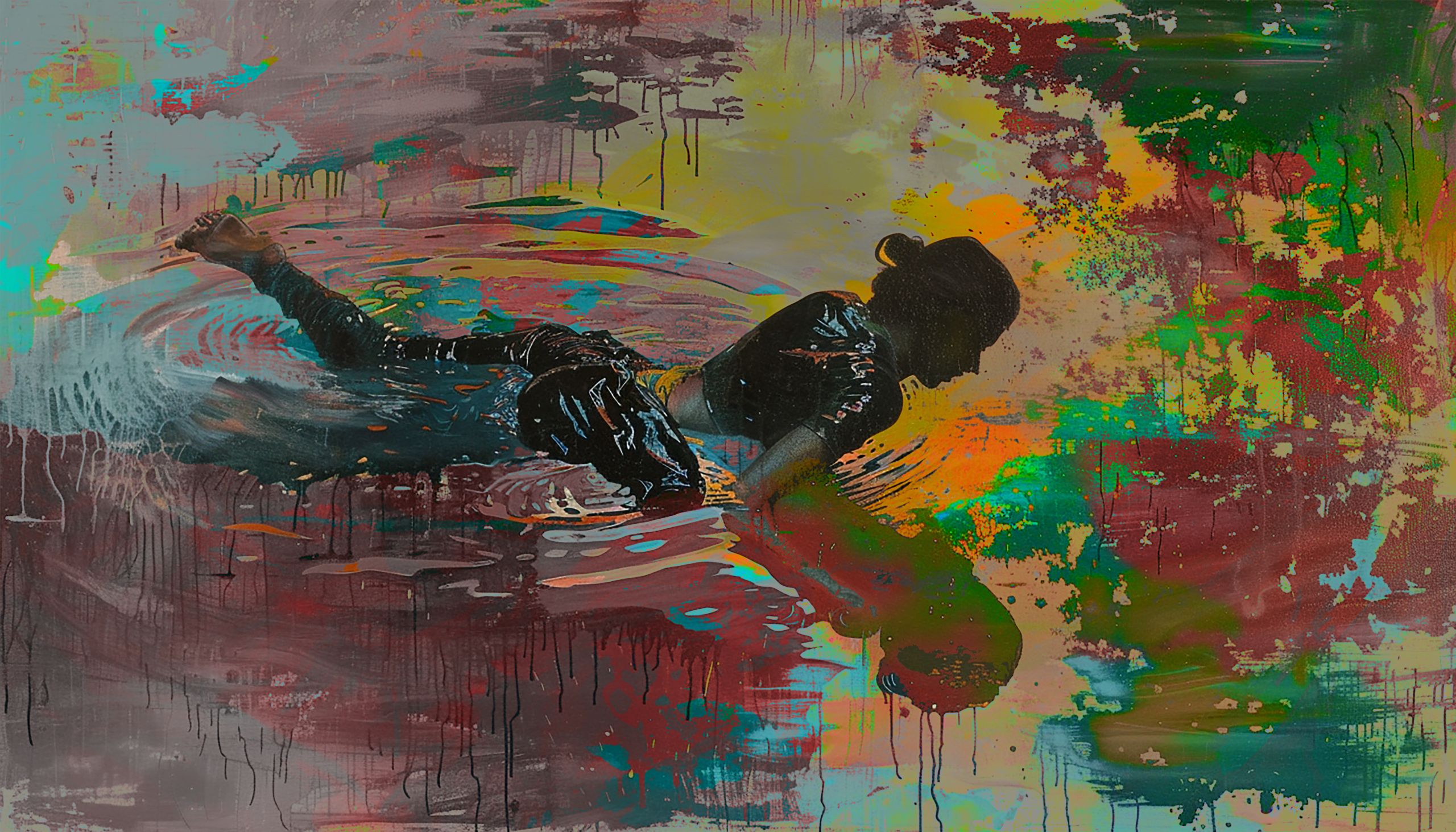
"Helen Finds Inspiration Puddle"
Out for a walk in Central Park after a brief yet torrential summer downpour, Helen Frankenthaler slips and ends up face down in a large puddle. Her initial disgruntlement turns slowly to wonder and delight. She has found her inspiration puddle… and the rest is art history…

"Abandoned Concept Trial 32"
There was a lot of trial and error in the development of Michael Craig-Martin's 'An Oak Tree'. The idea sat with him most of his adult and he had many failed attempts at getting it just right leading up to it's final iteration in 1973. This is a recent discovery of what is believed to be his 32nd conceptual trial. It was found in an abandoned shack in the far north of Ireland… and the rest is art history
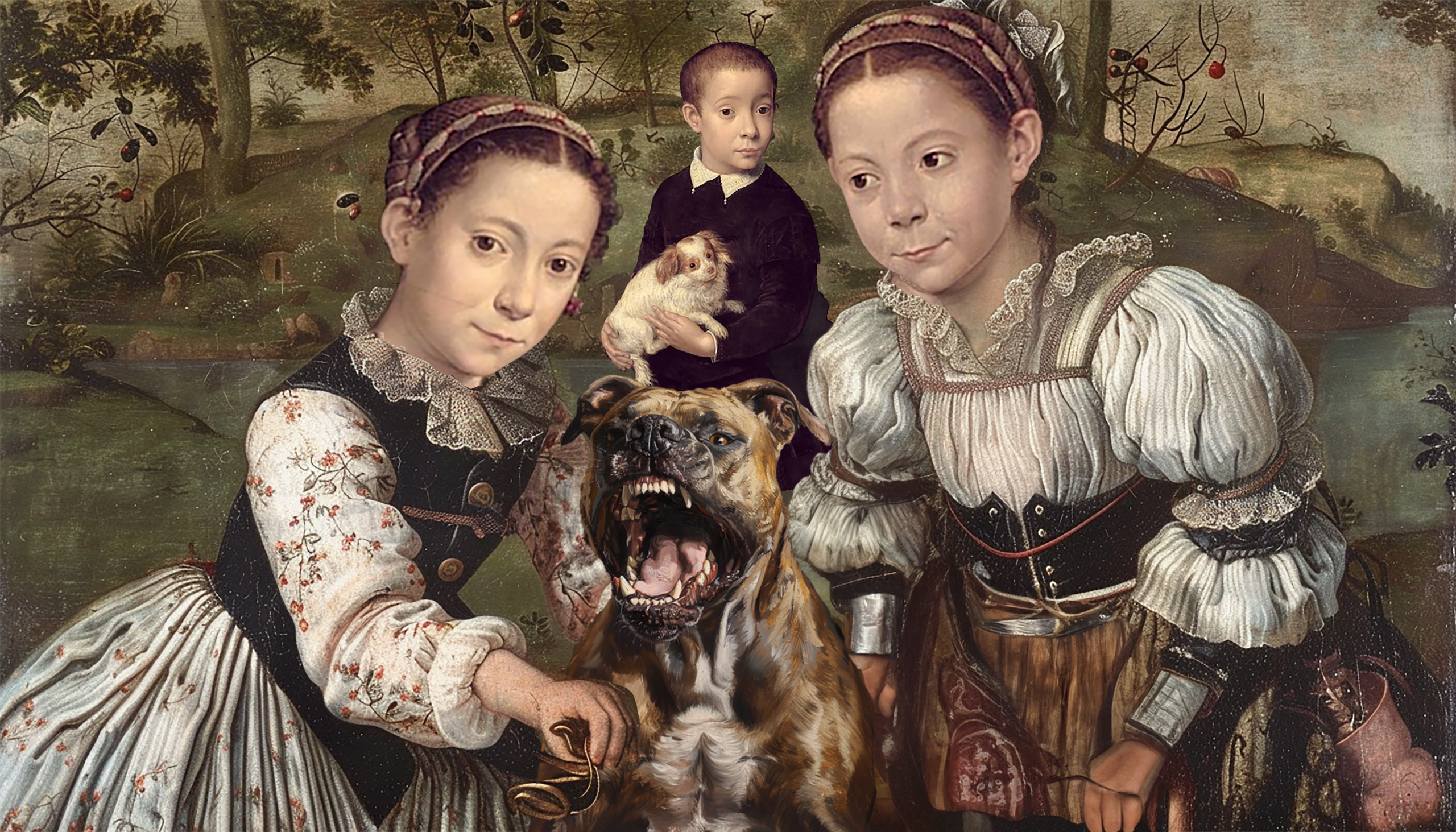
"Don't Take Puppy to a Dog Fight"
Half an hour before commencing work on her "Three Children with a Dog", circa 1570/1590, Sofonisba Anguissola came across two of her sisters and a brother about to play what they called, "Cane grosso, cane piccolo!"
Concerned that the larger of the two dogs (it being her favourite) might choke to death on the smaller puppy, she invited the three younger children to sit for a portrait with the little fella… and the rest is art history…

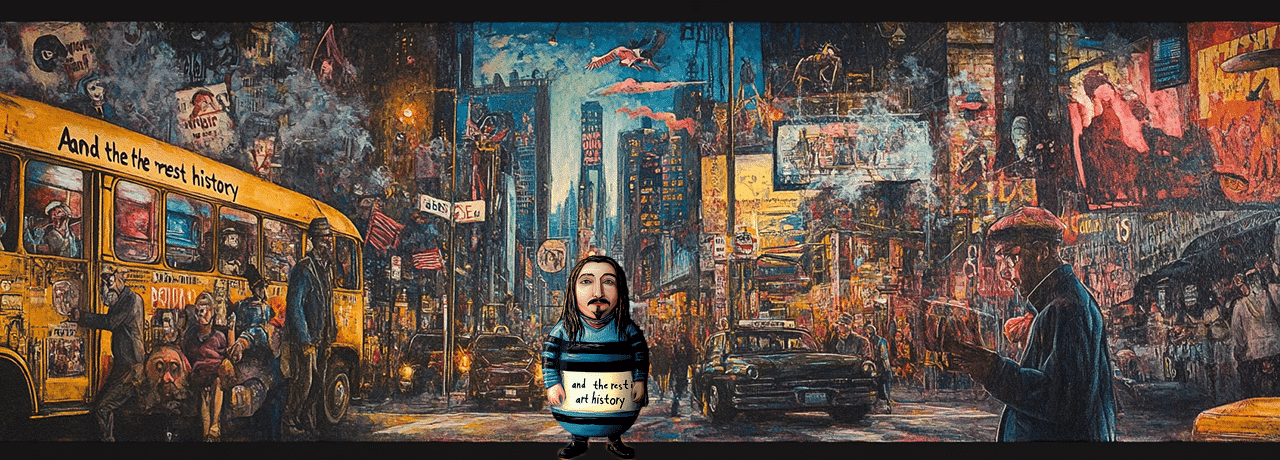
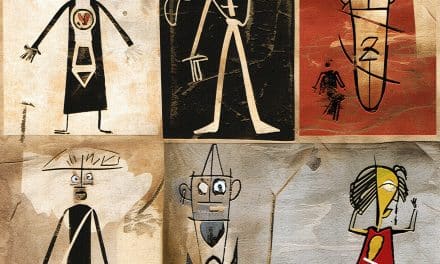

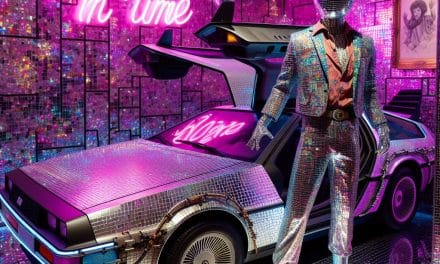
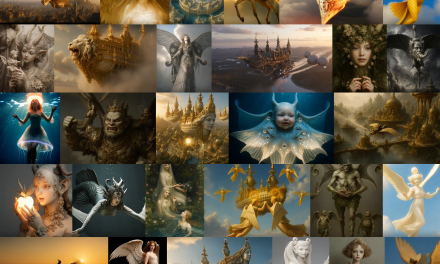
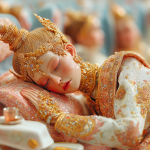
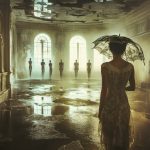
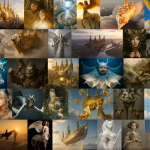
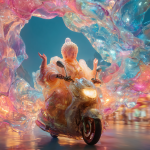



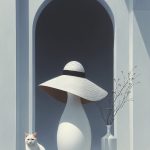

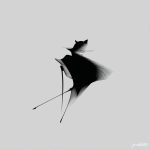
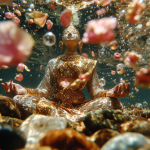
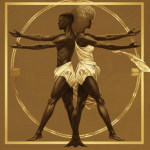

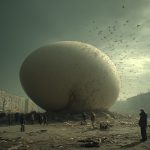
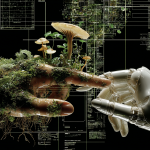


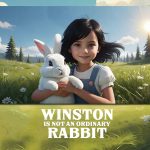



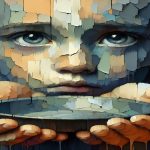
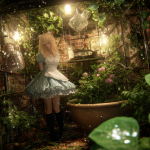
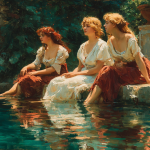
Comments